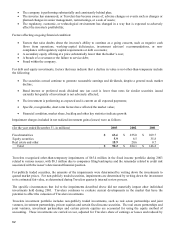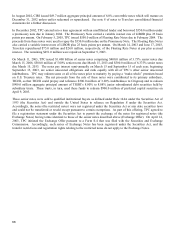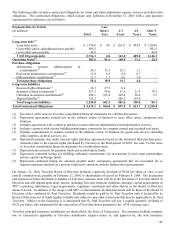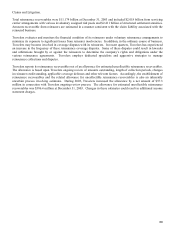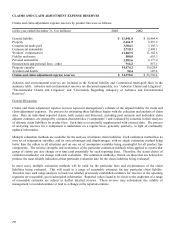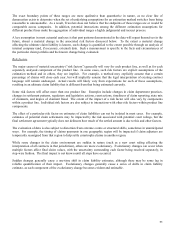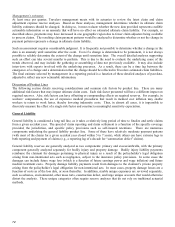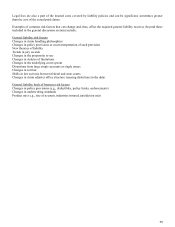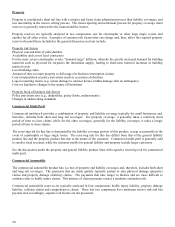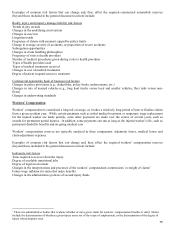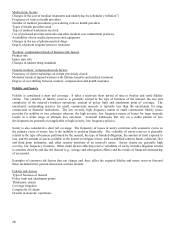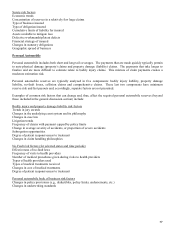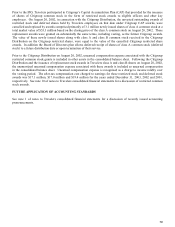Travelers 2003 Annual Report Download - page 73
Download and view the complete annual report
Please find page 73 of the 2003 Travelers annual report below. You can navigate through the pages in the report by either clicking on the pages listed below, or by using the keyword search tool below to find specific information within the annual report.
71
The exact boundary points of these ranges are more qualitative than quantitative in nature, as no clear line of
demarcation exists to determine when the set of underlying assumptions for an estimation method switches from being
reasonable to unreasonable. As a result, Travelers does not believe that the endpoints of these ranges are or would be
comparable across companies. In addition, potential interactions among the different estimation assumptions for
different product lines make the aggregation of individual ranges a highly judgmental and inexact process.
A key assumption in most actuarial analyses is that past patterns demonstrated in the data will repeat themselves in the
future, absent a material change in the associated risk factors discussed below. To the extent a material change
affecting the ultimate claim liability is known, such change is quantified to the extent possible through an analysis of
internal company (and, if necessary, external) data. Such a measurement is specific to the facts and circumstances of
the particular claim portfolio and the known change being evaluated.
Risk factors
The major causes of material uncertainty (“risk factors”) generally will vary for each product line, as well as for each
separately analyzed component of the product line. In some cases, such risk factors are explicit assumptions of the
estimation method and in others, they are implicit. For example, a method may explicitly assume that a certain
percentage of claims will close each year, but will implicitly assume that the legal interpretation of existing contract
language will remain unchanged. Actual results will likely vary from expectations for each of these assumptions,
resulting in an ultimate claim liability that is different from that being estimated currently.
Some risk factors will affect more than one product line. Examples include changes in claim department practices,
changes in settlement patterns, regulatory and legislative actions, court actions, timeliness of claim reporting, state mix
of claimants, and degree of claimant fraud. The extent of the impact of a risk factor will also vary by components
within a product line. Individual risk factors are also subject to interactions with other risk factors within product line
components.
The effect of a particular risk factor on estimates of claim liabilities can not be isolated in most cases. For example,
estimates of potential claim settlements may be impacted by the risk associated with potential court rulings, but the
final settlement agreement typically does not delineate how much of the settled amount is due to this and other factors.
The evaluation of data is also subject to distortion from extreme events or structural shifts, sometimes in unanticipated
ways. For example, the timing of claims payments in one geographic region will be impacted if claim adjusters are
temporarily reassigned from that region to help settle catastrophe claims in another region.
While some changes in the claim environment are sudden in nature (such as a new court ruling affecting the
interpretation of all contracts in that jurisdiction), others are more evolutionary. Evolutionary changes can occur when
multiple factors affect final claim values, with the uncertainty surrounding each factor being resolved separately, in
step-wise fashion. The final impact is not known until all steps have occurred.
Sudden changes generally cause a one-time shift in claim liability estimates, although there may be some lag in
reliable quantification of their impact. Evolutionary changes generally cause a series of shifts in claim liability
estimate, as each component of the evolutionary change becomes evident and estimable.



